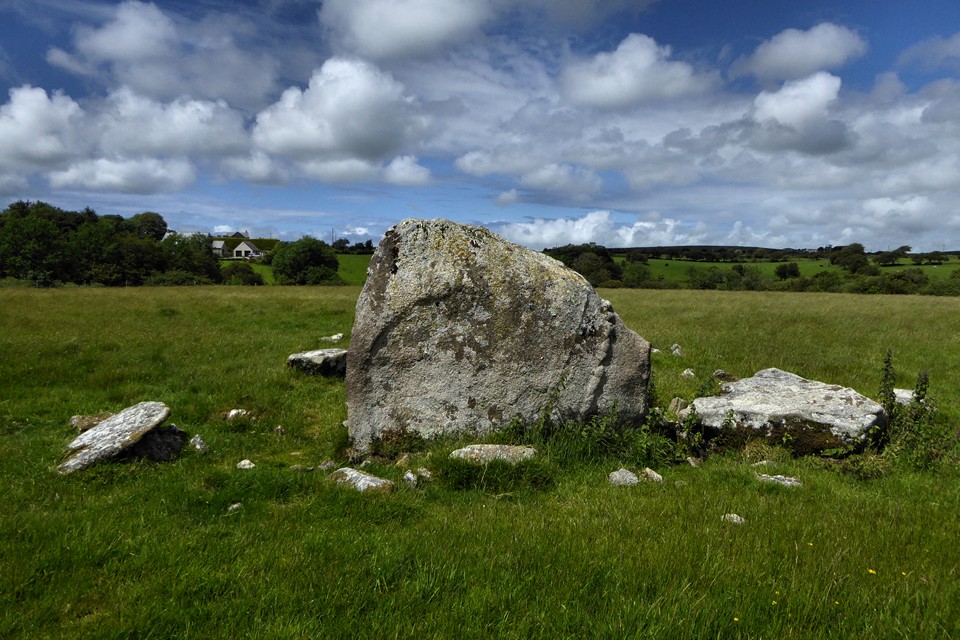
What a great stone.

What a great stone.

Looking north to Roughtor (centre) and Brown Willy (right of the upright).

Knotted mineral vein in the upright.



I’m definitely all for this being the remains of a quoit. The fact that there aren’t enough stones left to make one doesn’t seem that important. The one upright is massive and just the right height for balancing a capstone on. It’s also very unlike pretty much any ‘proper’ Cornish standing stones. Whatever it is, it’s a really good site to visit.

Delford Bridge Menhir


My own version of a map dated 1888 showing a stone at Delford bridge. See the original map at
old-maps.co.uk/large_ind.htm?currentWest=10580.7752204482¤tEast=11532.3751701768¤tSouth=18540.4781176970¤tNorth=19054.3031176970&countyGridMap=10corn061

Looking towards the northwest.
Buildings at the back are at West Rose.


Side view of the stone.
This photo was taken from the roadside at......err Delford bridge

March 2002
I passed this site totally by chance.
I just noticed it over a hedge as I approach the clapper bridge at Delford.
I took several photos with zoom lense from the road side.
Looking at the stone from different angles it looks to me like a fallen Quoit stone, other stones scattered around it would add weight to this theory.
Looking on the map I found that the neighbouring farms go by the names
Penquite, South Penquite, Best Penquite, Higher Penquite and Lower Penquite
“Pen” = Hill or Head “quite” could be a corruption of quoit
hence: Quoit on the hill
Anyone agree?
Phil
I always understood the name Penquite to mean
Pen = House/Head of
Quite = Wood
I like the idea of a quiot on a hill but of course the stone is in a valley. Also the only other large stones lying around it are not large enough to construct a quiot.





































































































































































































